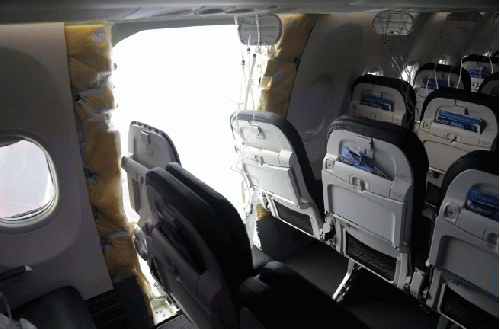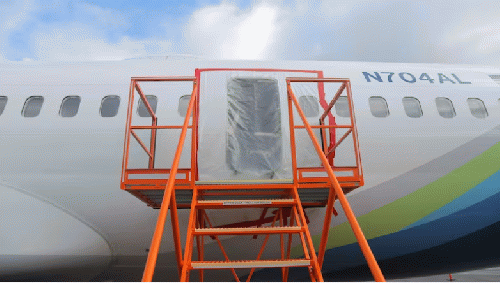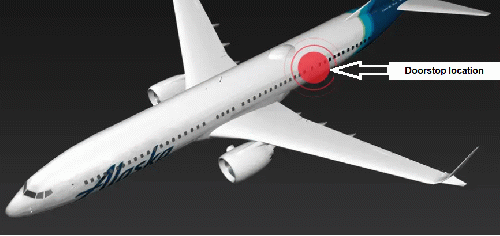'FAA approves a path for Boeing 737 Max 9s to return to operations', starting January 26th, 2024 (click here), and yet the evidence for cause of the failure is certainly questionable. Even though information is being withheld from the public, the scant information that is released to us implies that fatigue cracking may not, or may, have been a principal failure cause ("Was the Boeing 737 Door Blow-out the Starting Line For a Race to Destruction?"). However, the bolts were gone from the doorstop that flew off the jet aircraft while the jet was in flight, and multiple doorstops had loose bolts. Bolts do not come loose on their own.
Repetitive vibration cycles can loosen bolts. In my decades of engineering troubleshooting of broken machinery and equipment, the loosening of bolts and fatigue cracks are both caused by cyclic loads as vibrations flex structures back and forth. Inspections can determine if bolts are loose, but inspections alone will not, and cannot, determine the root cause of this type of failure.
We are being asked to believe that trained technicians are too stupid to finish tightening bolts when they are building aircraft. We are being asked to accept that these aircraft are being returned to service with a questionable failure cause, i.e., a supply chain problem, or quality problem, is touted as the sole cause for aircraft failures. Are the technicians being scapegoated for a jet aircraft design flaw?

Figure 1. A 737 doorstop blew off at 16,300 feet in the air (more than 3 miles up).
(Image by NTSB, US government) Details DMCA

Figure 2. Can another doorstop of a 737 jet aircraft fly off of the jet during flight?
(Image by NTSB, US government) Details DMCA
'The first of our 737-9 MAX will resume flying on Friday, Jan. 26, with more planes added every day as inspections are completed and each aircraft is deemed airworthy.' Is there a quality control problem or a design flaw ('Alaska Airlines says expects $150 mn hit from 737 MAX grounding', click here). Aircraft vibrations and forces on bolts can result from turbulence, engine vibrations, and the expansion of the aircraft fuselage, or skin, as the jet rises in the air to low pressures at high altitudes. Are these jets safe to return to service?
If the current investigation is inadequate, are jets safe? If not, can a stewardess or passenger be sucked out of a jet - several miles in the air - if another door stop explodes from a jet? ('How can a person be physically sucked from an airplane? A former pilot explains', click here).
Two Max8s crashed and killed everyone on board (Flying on a Boeing 737 Max 9? Here's what to know", click here). Can a door stop blowout on a 737 Max9 to strike the tail of that jet to send the jet into a sudden fatal tail spin?
I am not making specific accusations, but I am asking that we be provided answers to important safety questions that affect our lives. That is, a report of a completed failure investigation should be available to the public. Our lives may be endangered.
Addendum
The FAA was forwarded the following message. Boeing and the NTSB have no available email addresses for safety concerns.
Are the 737 Jets Safe for Return to Our Skies?
Based on presently available FAA communications to the public, I question FAA safety decisions concerning return to service of the 737 Max9 jet aircraft. An OpEd News article summarizes these safety concerns (link provided).
(Article changed on Jan 30, 2024 at 9:34 AM EST)





